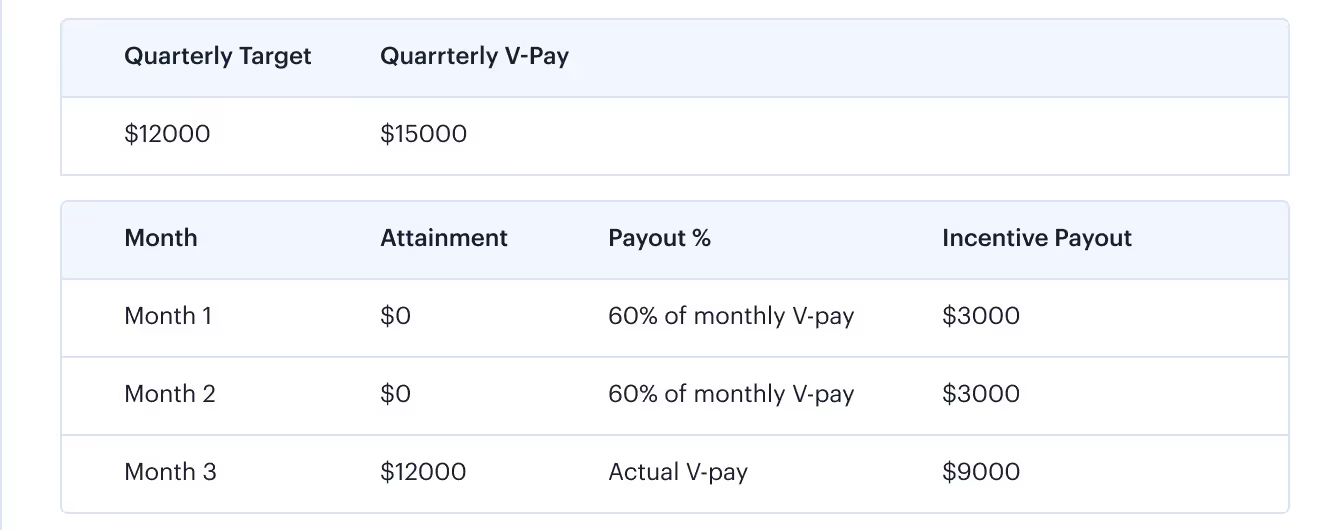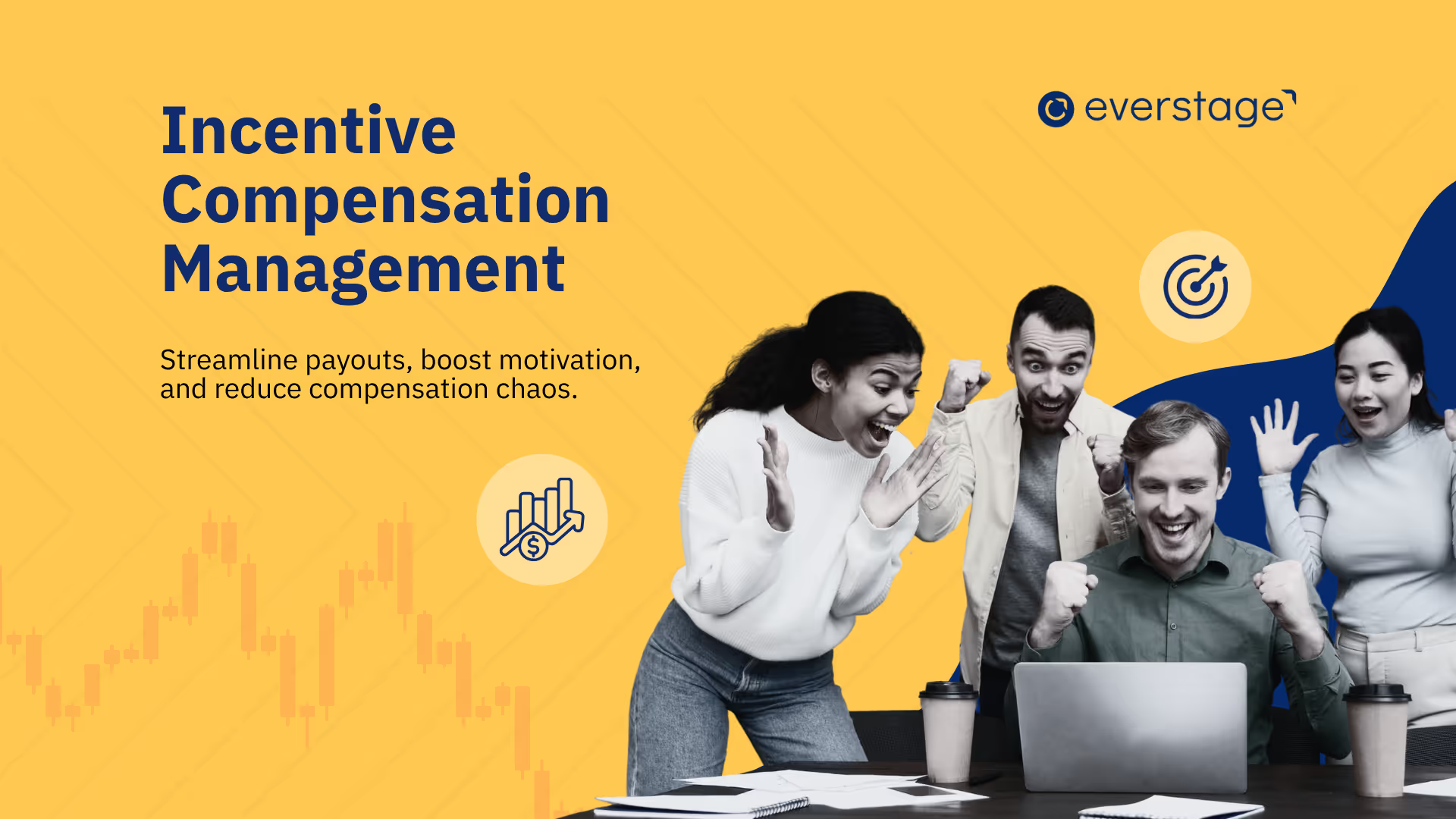Draw against commission in sales offers reps financial stability by advancing part of their commission during slow periods, ensuring steady cash flow and motivation.
- Smooth out income fluctuations for reps facing unpredictable deal cycles.
- Provide a safety net during onboarding or market downturns.
- Use recoverable or non-recoverable draws strategically to match business needs.
- Keep morale high and reduce turnover risk by supporting reps through tough phases.
Your success in sales depends on a whole lot of factors besides effectively hitting targets. Reps see a lot of ups and downs in their variable pay. Some days, when the deals keep rolling in, it’s all bright and rosy and on others, it’s dim and grim. On such low phases, till conditions improve, reps can bank on draws against commission.
What is Draw Against Commission?
In sales, draws can mean one of two things: an advance against commissions or a guarantee paid out during times of sales uncertainty. As an Ops person, you need to craft well-thought-out commission draws for fair compensation to your GTM reps and to keep up morale.
Draws are too important a factor for reps to overlook. They might get offered a fancy OTE but if they miss the details, they might end up struggling to meet their day-to-day expenses. You have to ensure that your reps don’t find themselves in that situation. Hence, draws. They dictate reps’ personal cash flow. Let’s get into the specifics of it.
In this blog post, we’ll be discussing two main kinds of draws and how they both serve a very specific purpose. They are:
- Recoverable draws
- Non-recoverable draws
Recoverable Draws
Recoverable draws are an advance against sales commissions. Once the commission period is over, Ops folks calculate the actual payout of reps and pay them the difference between the advance and the final payout. To ensure you don’t overpay, restrict the advance to a certain percentage of their 100% incentive (that they make on meeting their targets). This number usually oscillates between 30% and 60%. It is decided based on incentive percentage size and the likelihood of reps doing the numbers.
Recoverable draws are ‘technically’ a loan given by the company to the reps and you can recover them against all future commissions. Usually, they are used in three main scenarios covered below:
Seasonal business
If your SaaS business is seasonal, you can’t really expect your reps to close deals in slow quarters but at the same time, your reps need to make some dough for their expenses. So, you pay them an advance and then recover it during the quarter where they close deals.

Incentive heavy compensation plans
If your reps are on a 50%+ incentive payout, you can’t make them wait till the end of quarter to collect their paycheck. They need to be paid an amount but 50% of a quarter’s salary is a bit much to pay at once. So, you give them an advance against their commissions. This is usually kept to a portion of their 100% incentive payout. (30% to 60%)
Longer sales cycles
This kind of advance is commonly used in products that have unusually long sales cycles. If it takes 1 to 1.5 years to close every deal, your reps are to be paid out a portion of their future commissions in advance.
Sample Recoverable Draw plan

Non-Recoverable Draws
Non-recoverable draw payments made to the sales rep, as the name suggests, can’t be completely recovered. They are usually paid as a goodwill gesture by the company during certain periods of sales uncertainty and also to ensure that reps are motivated.
You can combine non-recoverable draws with an advance commission plans if required. But, it is slightly complicated if their final payout is less than the commissions you paid them. Instead of deducting against future commissions, you will just forfeit the difference. So, it would be wise to keep them both separate unless you are legally mandated to do so.
The following are some of the scenarios where non-recoverable draws are used.
New hires
Sales reps usually have a percentage of their compensation (20-60%) as incentives that they get paid only upon target attainment. During the initial months (0-3), it is highly unlikely for a new hire to hit their targets as they are still ramping. So, you set up draws to ensure that they can get paid their incentive despite not doing their targets. This scenario also applies if your reps move across teams, regions or even change roles.
Economic disasters
COVID has shown us the greatest real-time example of an economic collapse overnight. The entire Q2 and Q3 of 2020 did a real number on several businesses. For your employees to be adequately safeguarded, you could offer them a draw to ensure that they get paid some guaranteed money even though they didn’t necessarily earn it. This can also be local where your company is going through a really tough time.
Draw Against Commission Example
Let’s consider that you pay a draw of $500 per week to your rep. By the end of the month, your rep has to earn a commission of at least $2000. If their commission is $1500, then the remaining $500 becomes a dept. And your rep has to earn $2500 in commission the following month to make up for the previous month’s loss. This is a recoverable draw.
In the case of a non-recoverable draw, you pay them a draw of $2000 per month, and it doesn't change whether they hit their quota or not. And, the commission amount they earn is paid to them separately.
A Word of Advice Prior to Launching a Draws Plan
Before you go ahead and put your plan to action, keep the following points in mind:
- Think about the scenario where you might end up paying your reps more than what they might make as incentive payouts. Although you could try collecting them against future commissions, reps can quite simply quit if it’s too high an amount. So, model out risk scenarios and create a plan that is a win-win 9 out of 10 times.
- Draws need to be fair but can’t be too generous as well. Your plan will hurt you immensely if your reps are on draws even after six months. Use it very carefully with a clear goal of when you will stop. Reps need the pressure to do well and draws take away the need for them to go close deals in urgency.
Creating and implementing a proper draws plan requires access to a lot of performance data about your sales teams. How do you get that valuable information? Everstage is an SPM tool that gets you all the intel you need and SO much more. Book a demo to know more about our product.
Acknowledgements: Thanks to Samra Taban for editing the blog. Thanks to Aravindh Natesan for the designs.




.avif)
.avif)



%20Quota-to-OTE%20Ratio_%402x-p-1080.avif)


